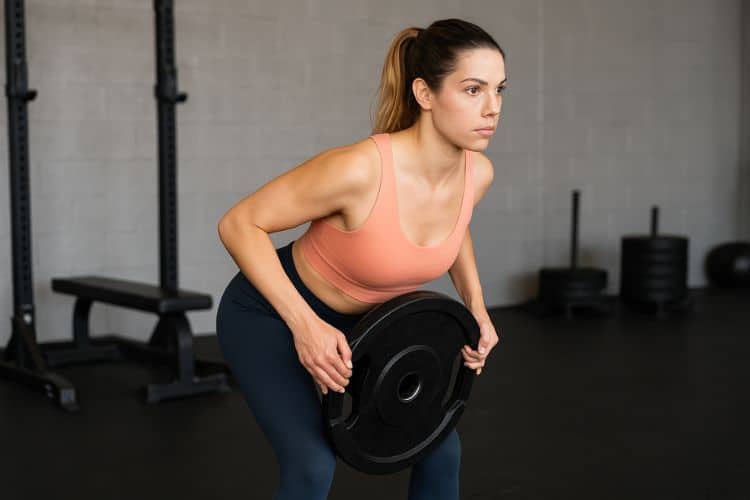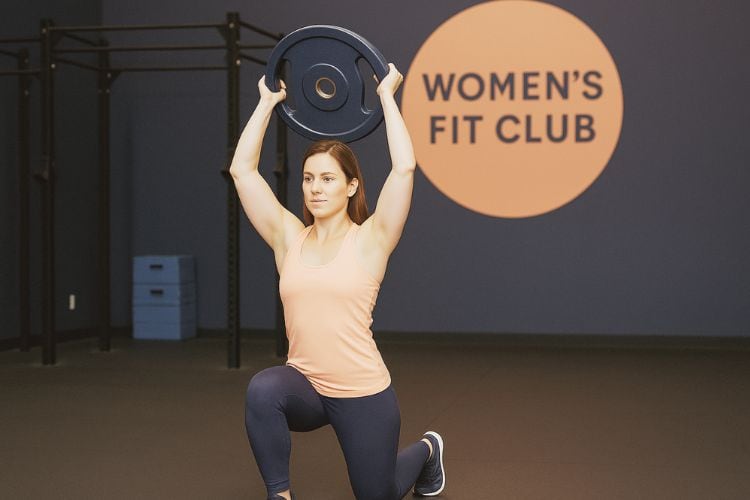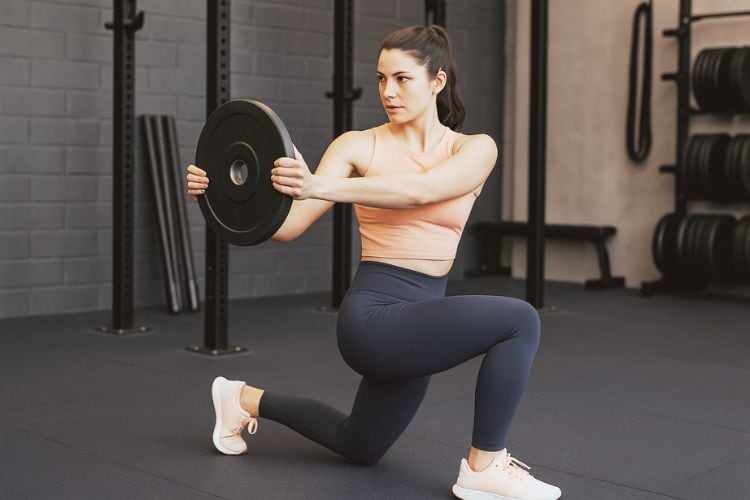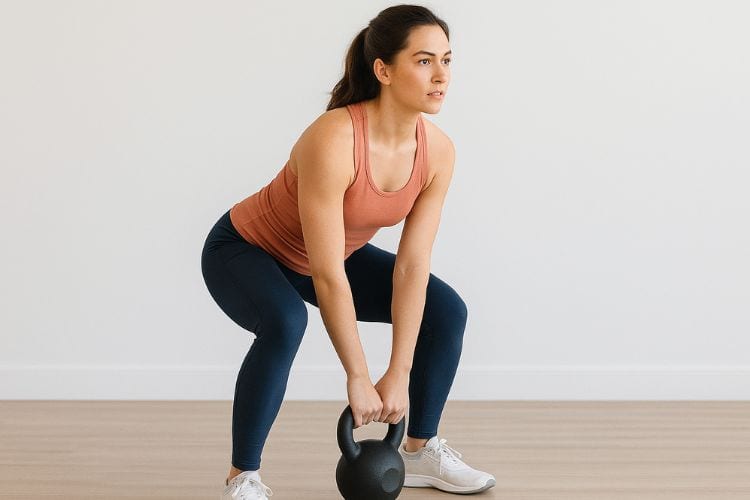Sign up for workout ideas, training advice, reviews of the latest gear and more.






When you’re short on time but still want to tone your muscles, boost your metabolism, and feel empowered, there’s nothing better than a 15-minute full-body workout with just one kettlebell. This compact yet powerful piece of equipment can transform your fitness routine — delivering strength, endurance, and cardio benefits in one quick session.
This guide breaks down an effective 15-minute one-kettlebell workout you can do anywhere — whether at home, at the gym, or outdoors. With proper technique and intensity, this workout can help you sculpt lean muscles, strengthen your core, and ignite fat-burning in record time.
The beauty of kettlebell training lies in its versatility. A single kettlebell can serve as a total-body training tool that targets every major muscle group while challenging your balance and coordination. Unlike dumbbells or machines, the offset weight of the kettlebell forces your stabilizing muscles to engage constantly — building functional strength and improving athletic performance.
With one kettlebell, you can perform compound movements that hit multiple muscle groups simultaneously. This means more results in less time, making it perfect for busy women who want an effective workout without spending hours at the gym.
Traditional strength training focuses on isolated muscles, but kettlebells bring strength and cardio together. The dynamic movements — swings, cleans, snatches — keep your heart rate high while toning your muscles.
Nearly every kettlebell movement requires core activation. From holding the bell in front of you to stabilizing it overhead, your abs, obliques, and lower back are constantly working to maintain balance.
Before jumping into the workout, take a few minutes to prepare your body and equipment.
Select a kettlebell that feels challenging but manageable for 10–15 reps. For most women, this means:
You want to feel the burn without sacrificing form.
A dynamic warm-up helps increase blood flow, loosen joints, and prepare your body for the intensity ahead. Perform each for 30–45 seconds:
This ensures your muscles are primed and ready for the 15-minute kettlebell circuit.
This workout uses compound, functional movements to work your entire body in just 15 minutes. Perform each exercise for 40 seconds of work followed by 20 seconds of rest. Complete 3 full rounds with minimal rest between exercises.
The kettlebell swing is the foundation of all kettlebell training. It targets your hamstrings, glutes, and core, while also boosting your heart rate for fat-burning benefits.
How to do it:
Stand with feet hip-width apart and grip the kettlebell handle with both hands. Hinge at the hips, swing the bell between your legs, and thrust your hips forward to swing it up to chest height. Control the descent and repeat.
Tip: Keep your back flat and core tight — this is a hip-hinge movement, not a squat.
The goblet squat strengthens your quads, glutes, and hamstrings while improving mobility and posture.
How to do it:
Hold the kettlebell close to your chest, elbows pointing down. Lower into a deep squat, keeping your heels flat and chest up. Push through your heels to return to standing.
Focus: Keep the kettlebell close to your body and avoid rounding your lower back.
Rows build a toned upper back, strong lats, and sculpted arms.
How to do it:
Place your left hand and knee on a bench or sturdy surface. Hold the kettlebell in your right hand and pull it toward your rib cage. Lower with control and repeat before switching sides.
Form tip: Keep your spine neutral and avoid twisting your torso.
This move combines upper-body strength with power. It engages your shoulders, triceps, and core.
How to do it:
Hold the kettlebell at shoulder height with your palm facing inward. Slightly bend your knees and use your legs to help press the kettlebell overhead. Lower back to shoulder height.
Pro tip: Engage your abs and avoid arching your lower back.
This hybrid move tones your legs, back, and shoulders in one smooth motion.
How to do it:
Start with the kettlebell between your feet. Perform a deadlift by hinging at the hips and lifting the bell until standing. Then pull the kettlebell toward your chest for an upright row. Lower slowly and repeat.
This exercise challenges your balance and coordination while working the legs, glutes, shoulders, and core.
How to do it:
Hold the kettlebell in your right hand at shoulder level. Step your left foot back into a lunge while pressing the kettlebell overhead. Return to standing and repeat on the other side.
Finish the circuit with an ab-blasting move that tightens your midsection.
How to do it:
Sit on the floor, knees bent, holding the kettlebell with both hands. Lean back slightly, lift your feet off the ground, and twist your torso side to side. Tap the kettlebell beside your hip each time.
Focus: Move slowly and keep your chest lifted to protect your spine.
After this powerful circuit, your heart rate will be up and your muscles will feel the burn. Take time to cool down and stretch to aid recovery:
Each exercise works multiple muscle groups at once — sculpting lean, functional strength across your upper body, lower body, and core.
Because kettlebell training combines resistance with continuous movement, it elevates your heart rate into the fat-burning zone. This means you burn calories during and after your workout thanks to EPOC (excess post-exercise oxygen consumption).
Kettlebells demand constant stability. Every swing, press, and lunge engages your abs, obliques, and lower back for a stronger, flatter midsection.
Many kettlebell moves involve dynamic shifts in balance and direction, improving joint mobility, coordination, and stability — especially beneficial for women as they age.
With just one kettlebell, you can train your entire body anywhere. No gym membership, no machines — just one piece of equipment and 15 minutes of dedication.
If you’ve mastered the basics, here’s how to take your one-kettlebell workout to the next level:
Here’s how to include this workout in your weekly fitness routine:
| Day | Focus | Workout |
|---|---|---|
| Monday | Strength + Cardio | 15-Minute One-Kettlebell Full-Body Workout |
| Wednesday | Core & Mobility | Kettlebell flow with swings, windmills, Turkish get-ups |
| Friday | Conditioning | 20-Minute Kettlebell HIIT Circuit |
| Sunday | Recovery | Stretching or yoga |
This balanced schedule keeps your training dynamic and prevents overuse injuries.
Proper form is key to maximizing results and preventing injury.
Pairing your kettlebell workouts with proper nutrition helps your body recover and grow stronger.
Eat a light meal or snack 60–90 minutes before exercising — something with complex carbs and protein, such as:
Refuel with protein and healthy fats to repair muscle tissue and restore energy:
And don’t forget to hydrate — drink water before, during, and after your session.
Even a short 15-minute kettlebell session can lead to visible results when done consistently. In just a few weeks, you’ll notice:
The secret is to show up regularly and challenge yourself each time. Remember, fitness isn’t about perfection — it’s about progress.
A 15-minute full-body one-kettlebell workout proves that you don’t need fancy equipment or endless hours in the gym to achieve real results. With one kettlebell and determination, you can strengthen every muscle, boost your metabolism, and elevate your confidence — all in less time than it takes to scroll through your feed.
Start today. Pick up that kettlebell, follow the circuit, and feel the transformation in your strength, energy, and mindset.
Looking to squeeze in a fast yet effective workout? Our 15-Minute Full-Body Kettlebell Workout delivers maximum impact in minimal time — perfect for busy days when skipping exercise feels tempting. Before you begin, check out our 20-Minute Full-Body Kettlebell Workout Routine to compare formats and see how slight time increases shift the intensity. To mix things up occasionally, try our 30-Minute Full-Body Kettlebell Workout Plan for Strength & Burn Fat and see which timing fits your schedule best. Pair this routine with our 20-Minute Full-Body HIIT Workout with Weights Before Work to alternate cardio-strength days. After your session, don’t forget to refuel — visit our Best Breakfast to Eat After a Workout for Recovery and Energy guide to support muscle repair and energy replenishment.
Stay up to date on the latest women’s health, fitness and lifestyle trends and tips.